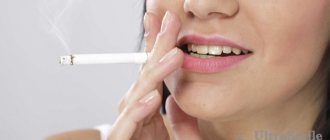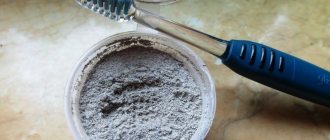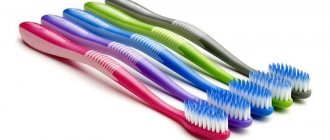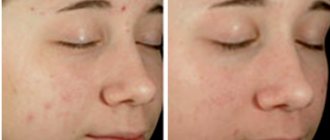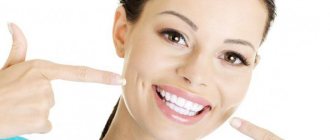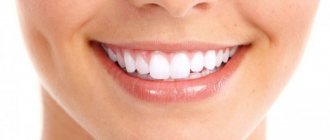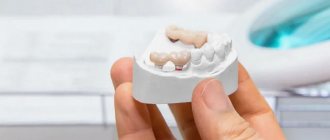Toothpaste is a mandatory attribute of personal hygiene and it is difficult to imagine a modern person who can do without oral care for a long time. Toothpaste not only eliminates bad breath, but is also a good preventive measure for quite serious diseases of the teeth and gums. However, there may be situations when toothpaste may not be at hand, or its use for some reason is not advisable. In such situations, the question is quite natural: what can replace toothpaste ? The alternative option should be as safe as possible and at the same time quite effective. In order to decide what to replace toothpaste with , you need to pay attention to its composition.
Composition of toothpaste
- The basis. Almost any toothpaste is based on water and a mixture of glycerin and sorbitol, which acts as a binding component;
- Abrasives. Any paste contains abrasive particles in one quantity or another. In ordinary pastes there is a minimal amount of them, in pastes with a whitening effect they make up the largest part of the composition. Most often, silicon oxide derivatives are used as such abrasive particles;
- Foaming agents. The foam formed during the process of brushing teeth allows you to most effectively remove even microscopic particles removed from the surface, acting as a kind of dirt trap;
- Thickeners. These components are necessary to impart uniformity to the composition, making the paste convenient to apply to a toothbrush and distribute over the surface of the teeth;
- Excipients. Such substances include dyes, flavors, sweeteners and therapeutic and preventive additives that give an attractive color, in cases where we are talking about pastes with a targeted effect.
Having considered the composition and principle of action of toothpaste, you can reasonably select product options and make a decision: what can replace toothpaste with .
Why do you need to brush your teeth?
The most common dental disease is caries . It destroys tooth enamel. When a hole forms, the tooth begins to hurt when eating. If a person does not treat a tooth, sooner or later it will have to be removed. The best prevention of caries is brushing your teeth.
Plaque accumulates on the teeth, which causes bad breath and the formation of tartar. Regular and proper brushing of teeth leaves no chance for caries.
Caries
Industrial toothpaste substitutes
Tooth powders
The most popular products include well-known tooth powders.
Teeth cleaning powders include:
- Calcium carbonate, which is the basis of the mixture;
- Supplements The role of additives is most often performed by clay, sodium carbonate and aluminum chloride;
- Flavors and flavoring additives;
- Excipients. Natural additives that perform certain functions are used as such substances. For example, essential oils have an antiseptic effect, sea salt has an antibacterial and anti-inflammatory effect.
The difference between powder when replacing toothpaste
- The abrasive particles of tooth powder are larger and sharper than those of toothpaste.
- The dry structure of the powder contains a large number of microparticles, allowing for better cleaning than a paste-like consistency.
- The powder contains fewer unnatural components than the paste.
- Toothpastes, due to their structure and the ability to add medicinal components, can be part of complex therapy for various diseases.
- Toothpastes, due to hermetic packaging and dosing capabilities, are considered more hygienic than powders sold in jars that open completely, causing the contents to come into contact with the external environment.
- Dry powders are not able to provide significant antimicrobial protection, unlike toothpastes.
- Tooth powder, being an abrasive product, may not be suitable for people with sensitive enamel.
- Toothpastes may contain quite aggressive chemical components sodium lauryl sulfate and triclosan.
- The powders are biologically neutral due to their natural composition.
Cons of tooth powders
The relative disadvantages of powders include the fact that with prolonged or frequent use, they, like whitening toothpastes, can lead to thinning of the enamel. In addition, if the powder is stored in an open container in close contact with the environment, it may become contaminated with pathogenic bacteria, which in turn can lead to infection of the mucous membranes of the oral cavity. Otherwise, tooth powder can be a worthy replacement for toothpaste in most cases.
Irrigators
Mechanisms that are acceptable for home use and essentially have no serious contraindications. The essence of the device is the targeted effect of a stream of water, which, due to the high pressure, washes away plaque and has a massaging effect on the gums.
It is customary to distinguish three main types of irrigators:
- Stationary. They operate from the network at a power of 220 Volts. The main operating mechanism is a compressor that provides water supply;
- Portable (travel). Work is carried out from a battery or batteries;
- Connected to the water supply network. Connect directly to the water tap using the included adapters.
The irrigator can have an effect on the oral cavity with both ordinary water and various medicinal compositions. In fact, this is one of the best options for replacing toothpaste for people of any age. The irrigator may be especially relevant for pregnant women, people who have orthopedic or prosthetic structures in their mouths, and people suffering from various diseases of the gums and mucous membranes.
Benefits and potential harm
So, we are convinced that it is too early to retire tooth powder, and it can be an indispensable assistant in dental care. Here are the key advantages of using an old proven product:
- absence of artificial and toxic components,
- thorough cleaning of the enamel due to the abrasiveness of the composition,
- the ability to remove plaque and even hardened dental plaque - bulky stone will have to be removed with ultrasound,
- the property of whitening teeth, returning them to their natural shade,
- additional polishing of the enamel to give a natural shine,
- calming effect, antimicrobial treatment of mucous membranes,
- additional saturation with fluorine if present in the composition,
- normalization of the natural balance of microflora,
- prevention of caries and other pathological processes in the oral cavity,
- affordable price.
Today, powder products that are used to clean teeth have very few negative characteristics. Due to the high degree of abrasiveness, there is some danger of injuring the enamel, which can lead to its thinning and the development of hyperesthesia - hypersensitivity. In addition, the standard packaging lacks airtightness and a dispenser, which makes using the product a little more difficult. For the same reason, the powder can quickly deteriorate, especially if it is stored in inappropriate conditions. Overall, this is an effective additional measure that will improve oral hygiene and prevent many dental problems.
- Vasilyeva, L.A. Prevention and oral hygiene, 2008.
How to replace toothpaste at home
Traditional (homemade) toothpaste substitutes include many substances and compositions. It is worth considering that it is not advisable to consider them as a long-term alternative, since their action is rather narrowly focused and in some cases their effectiveness does not have high indicators.
Activated carbon
Can be used both in pure form and with the addition of hydrogen peroxide. The latter has an antimicrobial effect, while the charcoal itself cleans and whitens tooth enamel. For one use, 1 tablet and 1-2 drops of peroxide are enough. Activated carbon does not require grinding, because upon contact with liquid it takes on a mushy state.
Charcoal has a good whitening effect. It should be noted that charcoal is a fairly active abrasive and, with prolonged use, can have a traumatic effect on tooth enamel.
Powder for teeth
You can prepare tooth powder at home by mixing: bentonite clay (30g), soda (30g), xylitol (15g), sea salt (7.5g), mint oil (5 drops), dried sage leaves (15g). The mixture is mixed with a wooden spatula and stored in a tightly closed container. This powder is a good replacement for toothpaste at home and in other conditions and is an almost exact analogue of the powder produced under industrial conditions. However, it is worth considering that any powder is an abrasive agent and requires short-term use to avoid damage to the enamel.
Salt
You can use either regular table salt or sea salt. Salt has a good anti-inflammatory effect, but it must be used carefully, mixed with water until it becomes pasty. Otherwise, hard particles with sharp edges can lead to microdamage to the enamel and cause increased tooth sensitivity.
Soda
It is another abrasive agent in the question of “ what to replace toothpaste with .” To create a cleaning mass, 1/2 teaspoon of baking soda must be mixed with 1/4 part of water. This mixture freshens breath and fights well against plaque on teeth, preventing the formation of tartar. To achieve a whitening effect, you can add 1-2 drops of lemon juice to the soda. Please note that after cleaning with soda, it is advisable to avoid drinking hot and cold drinks and food for 1-2 hours to prevent cracking of the enamel.
Herbal preparations
Mint, cloves, sage, thyme, anise and calamus root can be used as constituent units. Crushed roots of calamus can be mixed with an aqueous solution of propolis in almost arbitrary proportions.
The use of such mixtures has a beneficial effect on the gums and mucous membranes of the oral cavity. This type of hygiene products should be used with caution, taking into account the possibility of individual intolerance and the risk of developing allergic reactions.
Tea tree oil
Tea tree-based compositions have a good antibacterial and aromatizing effect. The composition is prepared by adding tea tree oil to warm water at the rate of 3-4 drops per glass of water. Such treatment has a particularly beneficial effect on the gums of people prone to developing periodontal disease and caries.
Banana peel
Few people know that banana peel has a good cleansing agent and whitening effect.
Powdered milk
Has a beneficial effect on the gums of people prone to bleeding. Produces gentle cleaning while neutralizing unpleasant odors.
Ash
You cannot use ash from resinous wood or recycled plywood. As a replacement for toothpaste, willow, birch, linden and oak are best suited for these purposes. Ash has a good bleaching effect and can serve as a good alternative to activated carbon due to its fineness, which allows for gentle cleaning.
White clay
It can be used both as an independent product and as part of a homemade combined tooth powder.
Laundry soap
Soap is a good antibacterial and antimicrobial agent. The main disadvantage of this method of cleaning teeth is the unpleasant taste in the mouth.
Lagerstroemia (Indian lilac)
A plant component with powerful antibacterial and anti-inflammatory effects. Provides a good therapeutic effect in the treatment and prevention of gingivitis, caries and some other diseases of the oral cavity.
Oils
Coconut oil and tea tree oil are popular alternatives to toothpaste. Most are used as rinsing solutions and as a component of herbal mixtures.
Rules of application
To get results without causing damage to your dental health, you must strictly follow the instructions for use. Before you start using the product, carefully read the following recommendations:
- you should not put wet bristles into a dry composition - it is better to pour the product into a different container each time and dilute the product in it,
- you need to add a little water to the composition or mix it with a paste,
- You should use a soft brush so as not to further injure the protective layer of your teeth,
- Duration of the procedure – 3-5 minutes,
- dry product should be used no more than once every 3 days,
- At the end of the procedure, you should rinse your mouth thoroughly with water.
First, it is recommended to consult with your dentist and find out the current condition of the enamel. The doctor will tell you which remedy is best to choose in your case.
What can you replace toothpaste with: conclusion
Having considered all of the above methods for replacing toothpaste, we can come to the conclusion that it is advisable to combine most of them, and some (salt, soda, charcoal, etc.) are not suitable for long-term use due to their powerful abrasive properties. One of the most effective and safe alternatives can be considered an irrigator and herbal mixtures.
In the question “ what to replace toothpaste with ,” all the methods indicated can be suitable, subject to the rules of use and the absence of abuse. We also recommend that you read our article: how often should you change your toothbrush, as well as the article on how to brush your teeth correctly:.
